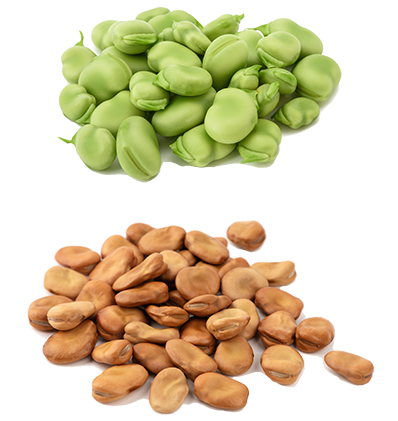Description :
- Appearance and Size: Horse beans are large, flat, and oval-shaped legumes. They have a thick outer skin that is typically green or brown in color. The size of horse beans can vary, but they are generally larger compared to other common beans.
- Culinary Uses: Horse beans are a versatile ingredient used in a variety of dishes. They can be cooked and eaten on their own as a side dish or added to soups, stews, salads, and vegetable dishes. In Ethiopian cuisine, horse beans are a key ingredient in the traditional dish called “ful medames.”
- Nutritional Value: Horse beans are highly nutritious and offer a range of health benefits. They are a good source of plant-based protein, dietary fiber, and various vitamins and minerals, including folate, iron, magnesium, and potassium. Horse beans are also low in fat and cholesterol-free.
- Health Benefits: Consuming horse beans can contribute to a healthy diet. They are rich in fiber, which promotes digestive health and helps maintain healthy cholesterol levels. The high protein content of horse beans makes them a valuable plant-based protein source. Additionally, they contain beneficial antioxidants and phytonutrients.
- Preparation: Before cooking horse beans, the outer skin is typically removed. This can be done by blanching the beans and then peeling off the tough skin to reveal the tender inner bean. Once the skin is removed, horse beans can be boiled, sautéed, or incorporated into various recipes.







Reviews
There are no reviews yet.